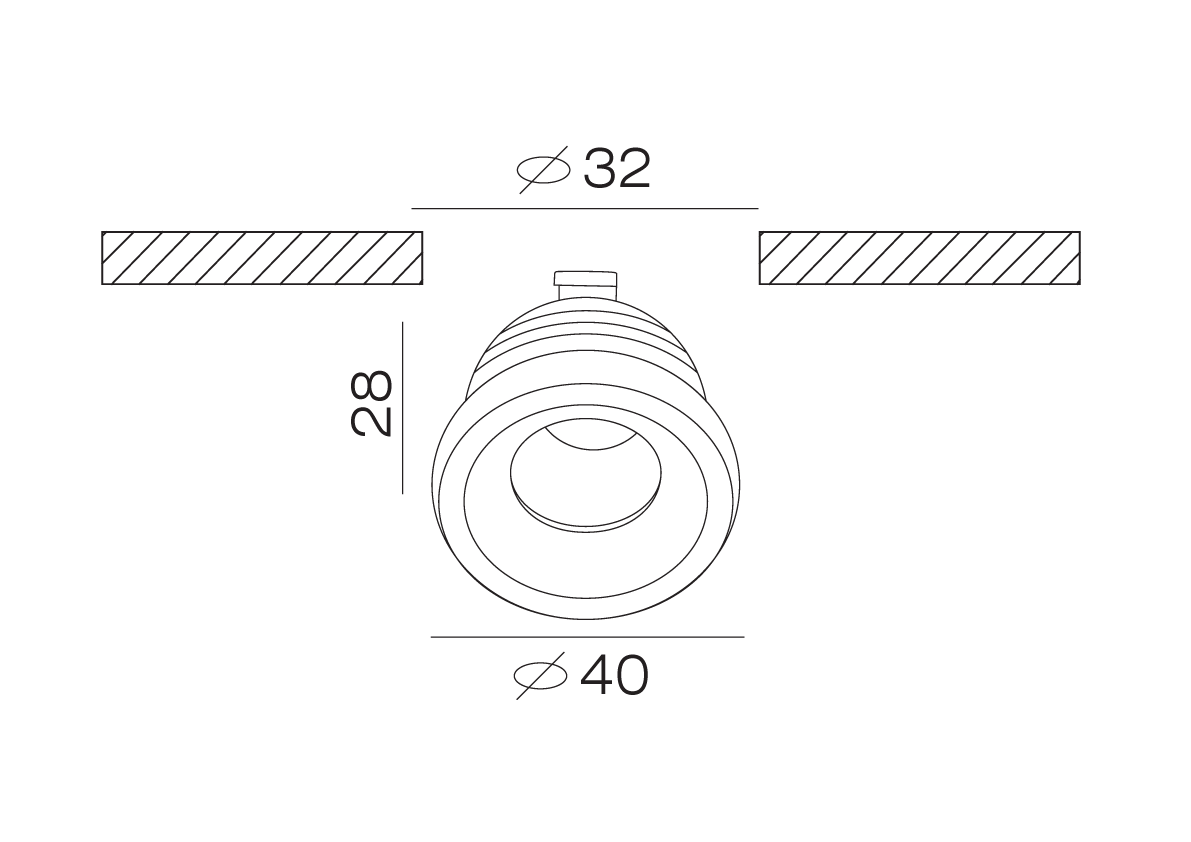
Traditional Light
Since 1879, when Thomas Edison invented the electric lightbulb, the invention that changed the life of mankind as a whole. To date, humans continue to experiment and attempt to enhance that invention to get better results and save more energy.
Throughout the years, there had been several types of electrical light, despite the fact that they differ in their efficiencies and properties, they all rely on the same principle of converting electricity into light and heat.
Types Of Light:

1) Incandescent Bulbs:
It is the first electrical source of light, and for more than 100 years it has had the same design.
It works when the electrical current passes through a thin wire called tungsten filaments, which is placed in a vacuum filled with inert gas that prevents the wire from burning, making this wire so hot that it starts to glow brightly.
As a result, incandescent bulbs produce a lot of energy as heat, which is a waste of energy.
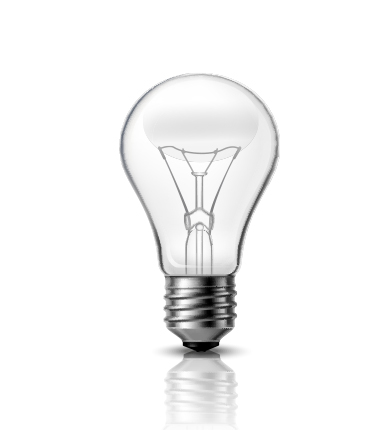
2) Compact Fluorescent Light Bulbs:
Also called compact fluorescent lamp (CFL), energy-saving light, is a fluorescent lamp designed to replace an incandescent light bulb. The lamps use a tube which is curved or folded to fit into the space of an incandescent bulb, and a compact electronic ballast in the base of the lamp.
It works by running electricity through gas inside the coils, exciting that gas, and producing light. There is a coating on the spirals, which makes this light white. These bulbs do not get nearly as hot as the incandescent bulbs.
Like all fluorescent lamps, CFLs contain toxic mercury which complicates their disposal.
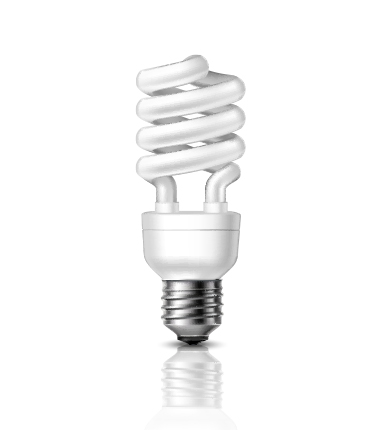
3) Halogen Bulbs:
Also known as a tungsten halogen lamp or halogen lamp in quartz, it is an incandescent lamp consisting of tungsten filaments sealed in a compact transparent envelope filled with a mixture of inert gas and a small amount of halogen such as iodine or bromine.
The halogen gas mixture and tungsten filaments produce a chemical reaction that returns the evaporated tungsten back to the filaments, increasing their lifespan and maintaining the clarity of the envelope.
A halogen lamp can operate at higher temperatures than conventional lamps used for the same amount of energy and the same operating life, producing higher efficiency light.
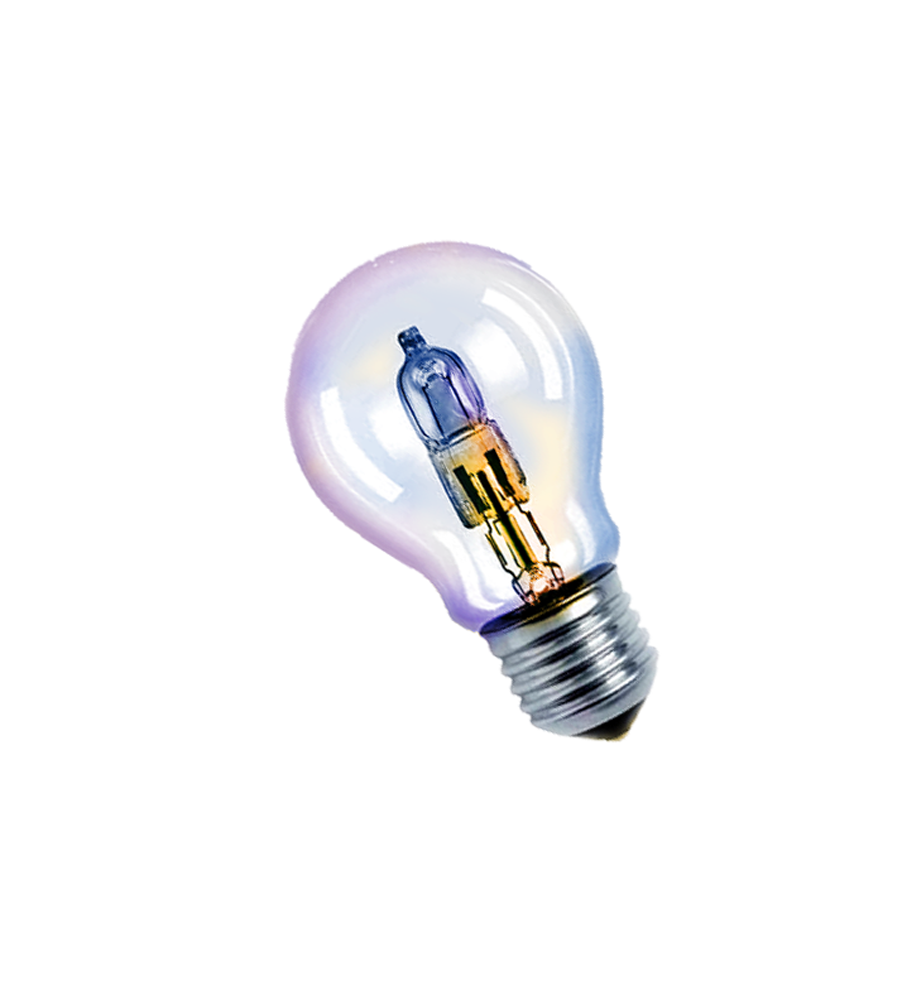
4) Metal Halide Bulbs:
This type of lightbulbs feature great quality of various shades of colors, as it uses iodine mixed with another element (sodium, thallium, indium, Scandium).
These lights take up to 6 minutes to get to its 80% of brightness, and to ignite again it takes up to 15 minutes that’s due to the high temperature of the glass.
These lights are well distinguished for their small size and efficiency, they are mostly used for lighting streets, stadiums and often for car headlights
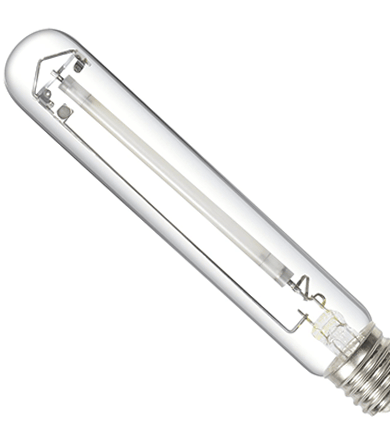
5) High Pressure Sodium:
The high pressure sodium lamp (HPS) is the most commonly used street light throughout the world.
The main external bulb of these lamps contains a small arc tube in which a mixture of compressed gases (xenon, sodium or mercury) and It produces light by running electricity through these gases.
It takes a while to turn on completely and produce a yellow-orange glow.
This type of lamps is preferred because it requires little maintenance.
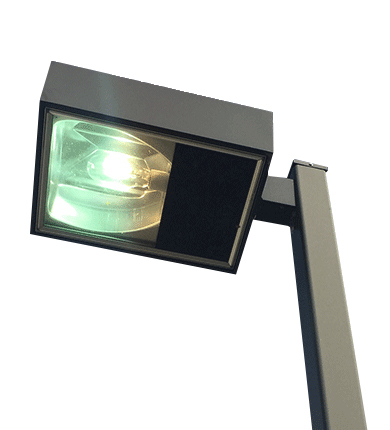
6) Low Pressure Sodium:
This type of lamp consists of two glass tubes, one inside the other.
The inner tube contains solid sodium and a combination of Neon and Argon. When igniting the lamp at first, it emits a reddish orange light that corresponds to the properties of neon and then becomes yellow.
The start-up period extends up to full illumination between 7 and 15 minutes.
Although they cover large areas of light, but the light is bad in color discrimination by it, so it is used in external lighting such as streets and airports
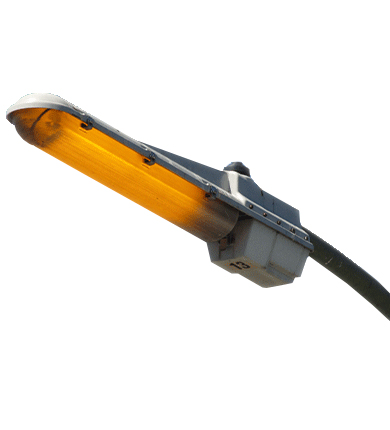
In this article : Traditional Light, , Types Of Light, Incandescent Bulbs, Fluorescent Light Bulbs, Halogen Bulbs, Metal Halide Bulbs, High Pressure Sodium, Low Pressure Sodium, CFLs, HPS, LPS
